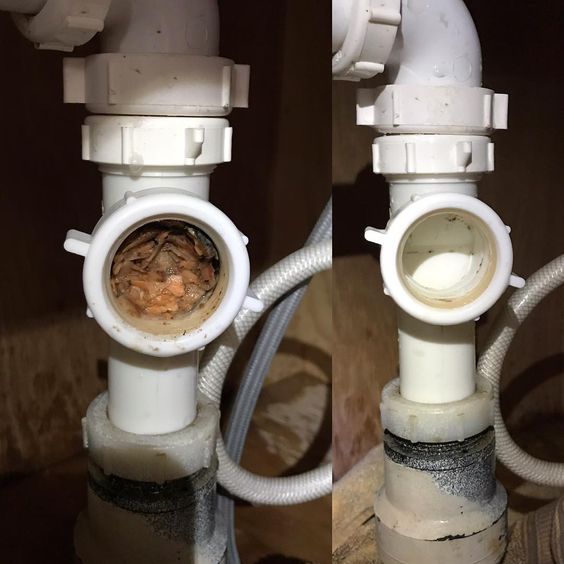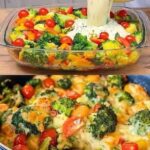Introduction: A clogged kitchen sink can bring your culinary endeavors to a screeching halt, disrupting your daily routine and causing frustration. Fortunately, you don’t have to break the bank or wait for a plumber to clear the blockage. With a few simple and cost-effective solutions, you can unclog your kitchen sink in no time. Here are 10 quick and affordable methods to get the water flowing freely once again.
- Boiling Water: One of the easiest and most effective ways to unclog a kitchen sink is by pouring boiling water down the drain. The heat can help dissolve grease and loosen debris, allowing it to wash away. Just be cautious if you have PVC pipes, as boiling water could damage them.
- Baking Soda and Vinegar: Create a natural and fizzing drain cleaner by pouring half a cup of baking soda followed by one cup of vinegar down the drain. Let it sit for 15-20 minutes, then flush with hot water. This dynamic duo can help break down gunk and eliminate odors.
- Plunger: A plunger isn’t just for toilets – it can also work wonders on a clogged kitchen sink. Simply fill the sink with enough water to cover the bottom of the plunger, then place the plunger over the drain and pump vigorously. The suction created can dislodge stubborn blockages.
- Wire Hanger: Straighten out a wire hanger and create a small hook at one end. Insert it into the drain and use a gentle twisting motion to snag any hair or debris lurking within. Pull out as much gunk as possible, then flush with hot water.
- Salt and Baking Soda: Mix equal parts salt and baking soda and pour it down the drain. Follow up with boiling water to help dissolve grease and loosen buildup. This DIY solution is gentle yet effective on minor clogs.
- Plumbing Snake: If the clog is particularly stubborn, a plumbing snake (or auger) can help break it apart. Insert the snake into the drain and twist it clockwise while pushing forward. Keep feeding the snake until you encounter resistance, then rotate and retract to dislodge the blockage.
- Dish Soap: Squeeze a generous amount of dish soap into the drain, followed by hot water. The soap’s slippery texture can help lubricate the pipes and flush away grease and food particles. Let it sit for a few minutes before rinsing with more hot water.

- Wet/Dry Vacuum: If you have a wet/dry vacuum cleaner, you can use it to suck out the clog from the drain. Set the vacuum to liquid mode, create a tight seal around the drain with the hose, and apply suction. Be sure to cover any overflow vents to prevent a mess.
- Enzyme Cleaner: Enzyme-based drain cleaners are designed to break down organic matter, making them ideal for kitchen sinks plagued by food-related clogs. Follow the manufacturer’s instructions for best results, and allow the cleaner to work overnight for stubborn blockages.
- Call a Professional: If all else fails or if you suspect a more serious issue, don’t hesitate to call a professional plumber. While it may require a larger investment, the peace of mind and expertise they provide can save you time, money, and headaches in the long run.
- Hot Saltwater Solution: Dissolve a handful of coarse salt in hot water and pour it down the drain. The abrasive nature of the salt can help scrub away grease and grime, while the hot water helps to melt and flush it down.
- Use a Wet Cloth: If you have a double sink, plug one side with a wet cloth while you plunge or use a plunger on the other side. This creates a seal, allowing you to generate more pressure and force the clog loose more effectively.
- Remove and Clean the Trap: Underneath your sink, there’s a curved pipe called the P-trap. Place a bucket underneath to catch any water, then unscrew the nuts holding the trap in place. Once removed, clean out any debris or buildup inside, then reattach the trap and run water to check for leaks.
- DIY Drain Cleaner: Mix together one cup of salt, one cup of baking soda, and one-quarter cup of cream of tartar. Pour a small amount down the drain, followed by hot water. Let it sit for a few minutes before rinsing with more hot water. This homemade cleaner can help break down tough clogs.
- Use a Wet/Dry Shop Vacuum: If you don’t have a wet/dry vacuum cleaner, you can create a makeshift version using a regular vacuum and a plastic bag. Tape the open end of the bag securely around the vacuum hose, then create a tight seal around the drain with the bag. Turn on the vacuum to suck out the clog.
- Biodegradable Drain Cleaners: Look for biodegradable drain cleaners that use natural enzymes to break down organic matter. These cleaners are safer for the environment and can effectively dissolve food, grease, and soap scum without harsh chemicals.
- Check the Garbage Disposal: If your kitchen sink is equipped with a garbage disposal, make sure it’s not contributing to the clog. Run the disposal to break up any food particles or debris that may be causing the blockage, and flush with plenty of water to clear the pipes.
- Prevent Future Clogs: Once you’ve successfully unclogged your kitchen sink, take steps to prevent future blockages. Avoid pouring grease, oil, coffee grounds, and starchy foods down the drain, and use a sink strainer to catch food particles before they can cause problems.
By incorporating these additional tips into your unclogging efforts, you can increase your chances of success and keep your kitchen sink running smoothly for years to come. Remember to always prioritize safety and use caution when attempting DIY solutions, and don’t hesitate to seek professional assistance if needed.
Conclusion: A clogged kitchen sink is a common nuisance, but it doesn’t have to derail your day or drain your wallet. With these 10 quick and affordable methods, you can tackle minor clogs and restore your sink to its full functionality with minimal hassle. From simple DIY solutions to professional assistance, there’s a strategy for every budget and level of expertise. So don’t let a clog slow you down – try these techniques and get back to enjoying a smoothly flowing kitchen sink.
- Paula Deen’s 5-Minute Fudge (Classic Southern Style)
 C’est This old-fashioned fudge is a Southern favorite because it’s fast, foolproof, and ultra-creamy. No candy thermometer, no complicated steps—just smooth chocolate goodness loaded with crunchy pecans. Ingredients Instructions (Ready in Minutes!) Prepare the Pan Heat the Base Melt the Chocolate Add the Good Stuff Set the Fudge Slice & Serve Time & Yield Flavor … Read more
C’est This old-fashioned fudge is a Southern favorite because it’s fast, foolproof, and ultra-creamy. No candy thermometer, no complicated steps—just smooth chocolate goodness loaded with crunchy pecans. Ingredients Instructions (Ready in Minutes!) Prepare the Pan Heat the Base Melt the Chocolate Add the Good Stuff Set the Fudge Slice & Serve Time & Yield Flavor … Read more - Pecan Sandies (Classic Butter Pecan Cookies)
 This recipe has been my top pick this month—I’ve made it six times, and it’s still just as magical every single batch. Pecan Sandies are a timeless cookie, celebrated for their tender, crumbly texture and deep buttery flavor. Each bite melts in your mouth, releasing the warmth of toasted pecans and vanilla. Simple in appearance … Read more
This recipe has been my top pick this month—I’ve made it six times, and it’s still just as magical every single batch. Pecan Sandies are a timeless cookie, celebrated for their tender, crumbly texture and deep buttery flavor. Each bite melts in your mouth, releasing the warmth of toasted pecans and vanilla. Simple in appearance … Read more - Chocolate Caramel Peanut Bars Homemade Candy Bars
 Introduction These chocolate caramel peanut bars are a classic homemade candy that tastes just like your favorite chocolate bar—but fresher, richer, and made with love. Layers of crunchy peanuts, soft caramel, and smooth chocolate come together to create a perfect bite. They’re ideal for holidays, parties, gifting, or whenever you want a decadent treat that … Read more
Introduction These chocolate caramel peanut bars are a classic homemade candy that tastes just like your favorite chocolate bar—but fresher, richer, and made with love. Layers of crunchy peanuts, soft caramel, and smooth chocolate come together to create a perfect bite. They’re ideal for holidays, parties, gifting, or whenever you want a decadent treat that … Read more - Creamy Cheesy Broccoli Vegetable Casserole
 Introduction This creamy broccoli vegetable casserole is a warm, comforting dish packed with vibrant vegetables and smothered in a rich, cheesy sauce. It’s perfect for family dinners, holidays, potlucks, or when you want a hearty meatless meal. The combination of broccoli, cherry tomatoes, bell peppers, and melted cheese creates a dish that’s both nutritious and … Read more
Introduction This creamy broccoli vegetable casserole is a warm, comforting dish packed with vibrant vegetables and smothered in a rich, cheesy sauce. It’s perfect for family dinners, holidays, potlucks, or when you want a hearty meatless meal. The combination of broccoli, cherry tomatoes, bell peppers, and melted cheese creates a dish that’s both nutritious and … Read more - What Your Favorite Cake Reveals About Your Personality (and Why “Difficult” Might Just Mean Delightfully Unique)
 Food has a funny way of telling stories about who we are. From your morning coffee order to your favorite snack, what you reach for often reflects your mood, personality, and even your values. But have you ever wondered what your favorite cake might say about you? Food has a funny way of telling stories … Read more
Food has a funny way of telling stories about who we are. From your morning coffee order to your favorite snack, what you reach for often reflects your mood, personality, and even your values. But have you ever wondered what your favorite cake might say about you? Food has a funny way of telling stories … Read more
